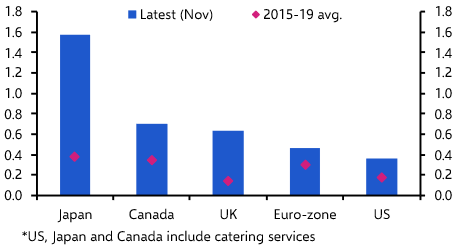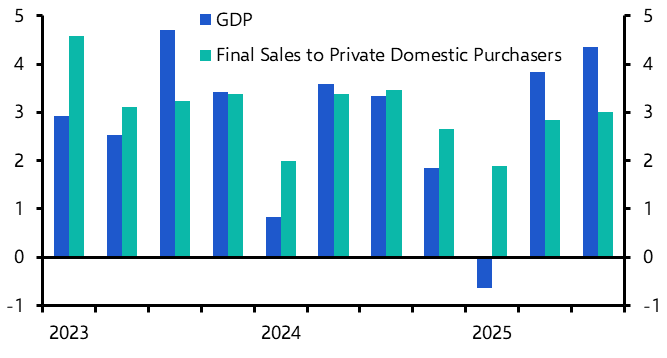The collapse of the Turkish lira was the big EM story of 2021. Although this year has started on a quieter footing, Jason Tuvey, our Senior Emerging Markets Economist, warns President Erdogan's economic ideas mean the country is still on an unsustainable economic path.
Q: Jason, 2022 has been off to a relatively quiet start after the lira’s collapse last year. Is the worst behind us?
After tumbling to 18.3/$ in late-December – a drop at that point of 60% year-to-date – the lira has stabilised at around 13.5/$ in the early weeks of this year and the central bank followed through on its pledge to keep interest rates on hold at its most recent meeting. But there’s no sign the government is about to give up on its pursuit of its "new economic model", and that means Turkey’s underlying economic problems will be amplified.
Q: Your new report argues there was a method on the government’s part in allowing the currency to fall like that – what was it trying to achieve?
A: We’ve just completed an in-depth analysis about President Erdogan’s unconventional economic thinking which untangles his argument that high interest rates lead to high inflation. Our report does concede that the lira’s collapse has helped reduce Turkey’s reliance on inflows of “hot money” and contributed to economic rebalancing by making exports more competitive and pushing domestic consumption to favour domestically-produced goods over imports.
Q: Given those benefits, why have the president’s economic ideas received such heavy criticism?
A: A weaker lira can help in some areas, but it carries plenty of economic costs too. Inflation is already well on the way to 40% and that's going to feed into wage and price expectations, entrenching inflation further. Turkey’s high external debts mean its economy is vulnerable to tighter external financing conditions. Turkey’s banks, in particular, rely heavily on access to international capital markets, but are possibly more vulnerable to big withdrawals of private dollar deposits if customers lose faith in the financial system.
Q: How have government efforts to manage the crisis only made things worse?
A: The official response has included minimum wage hikes, capital controls and, most notably, moves to compensate lira depositors for exchange rate losses. In the case of the deposit scheme, the government has pegged compensation for depositors to the rate of the lira’s depreciation. That means exchange rate risk has morphed into potentially significant public sector risk: for example, we estimate a 30% fall in the lira could equate to a bill for the government equal to at least 3% of GDP.
Q: How does Turkey get off this path?
A: The only triggers which we think will prompt a return to orthodoxy are if the banking system comes under renewed strain or if there’s change on the political front. Elections are scheduled for next year and President Erdogan’s ruling People’s Alliance is losing support as living standards deteriorate. A move back onto a more orthodox policy path would go a long way to fixing Turkey’s current economic issues – remember, the lira rose 20% from the end of 2020 to March last year because markets perceived more credible leadership of the central bank.
Read Jason's report: Turkey’s “new economic model” to amplify old problems
Related Research
- Our Q1 Emerging Europe Economic Outlook shows how Turkey will be an exception this year in a region which will see central banks hiking rates to address rising inflation.
- Russia-Ukraine is another focus of our Emerging Europe team. Here, they compare the impact of latest crisis on Russian asset prices with the annexation of the Crimea in 2014..
- Our latest, monthly Emerging Markets Capital Flows Monitor highlights Turkey's outlier status, even as it warns of a challenging global backdrop for EMs this year.



